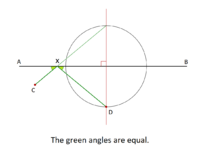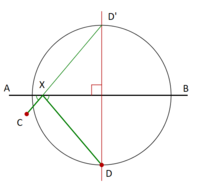You are using an out of date browser. It may not display this or other websites correctly.
You should upgrade or use an alternative browser.
You should upgrade or use an alternative browser.
This is a question for olmpiad
- Thread starter Yashwanth
- Start date
Dr.Peterson
Elite Member
- Joined
- Nov 12, 2017
- Messages
- 16,604
Draw a picture of what a solution would look like, so we can have something to talk about.
Then you might think about whatever you might know about optics. Does the picture remind you of something about light rays?
Then you might think about whatever you might know about optics. Does the picture remind you of something about light rays?
Steven G
Elite Member
- Joined
- Dec 30, 2014
- Messages
- 14,559
That would not be what we consider to be helpful to you. We prefer that you explain the solution to us with our guidance. So please post a drawing and state what you think you need to do. Thanks.Please explain the solution
Dr.Peterson
Elite Member
- Joined
- Nov 12, 2017
- Messages
- 16,604
I think the key is just the word "reflection", which I was hoping to elicit. The only problem I see with the drawing is that it suggests that the circle plays some specific role in solving the problem, which I don't think it does. Of course, we don't want to give an actual solution yet, so showing a complete construction wouldn't have been appropriate. I would just have drawn D' and omitted the circle, if I wanted to go that far.
Unfortunately, it isn't clear from the question how you are required to "find" X (e.g. with a compass and straightedge construction, or something else).
@Yashwanth, do you have any ideas yet for solving the problem?
Unfortunately, it isn't clear from the question how you are required to "find" X (e.g. with a compass and straightedge construction, or something else).
@Yashwanth, do you have any ideas yet for solving the problem?
pka
Elite Member
- Joined
- Jan 29, 2005
- Messages
- 11,974
What if \(\overleftrightarrow {AB} \bot \overleftrightarrow {CD}~?\)The green angles?
The circle is just to help us to find the point [MATH]D'[/MATH] and nothing else. To find the reflection of [MATH]D[/MATH] we need to drop a perpendicular from [MATH]D[/MATH] and continue it with the same distance. (two radii). The rest is trivial.
It doesn't make any differences. Just do the same as in that diagram.What if \(\overleftrightarrow {AB} \bot \overleftrightarrow {CD}~?\)


